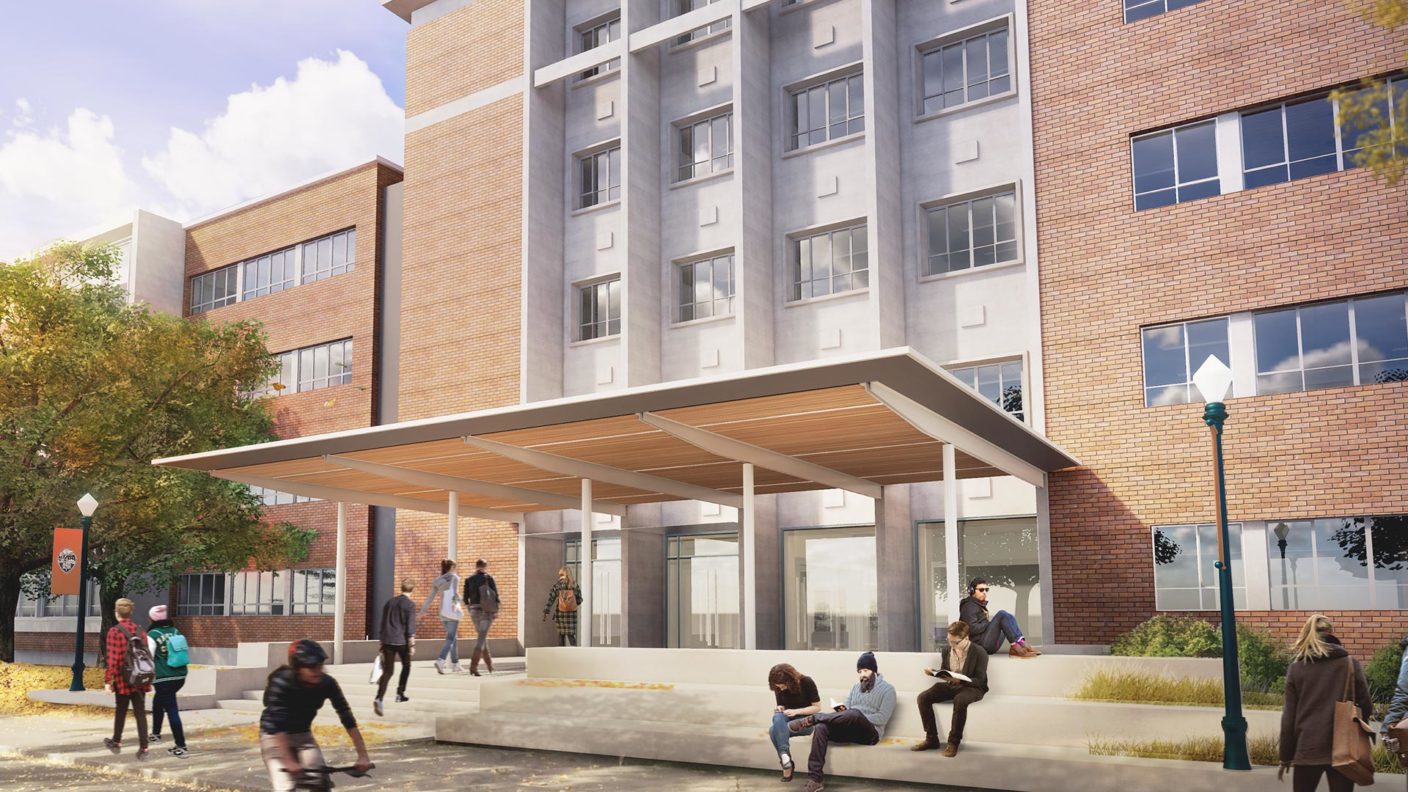
- 235,000 square feet
- $158 million
- Energy consumption 36% below code
Oregon State University Cordley Hall Renovation
Renovation at Scale
OSU’s Cordley Hall remains one of the largest projects we’ve taken on to date — at the time of construction, it was also the largest project ever executed at OSU. It was a technically complex application that required careful coordination among our team and consistent collaboration with structural and architectural consultants. We worked closely with the contractors during the design phase to develop a functional, constructable design that met the needs of the owner.
As a contributing building in OSU’s Historic District, only a limited scope of architectural changes was available from an energy improvement standpoint. The building also needed to abide by OSU’s Requirement for Sustainable Development, which places a large focus on energy efficiency.
Finally, the renovation called for redundancy in the systems and energy efficiency as a top priority so the building would be suitable for diverse, state-of-the-art scientific research long into the future.
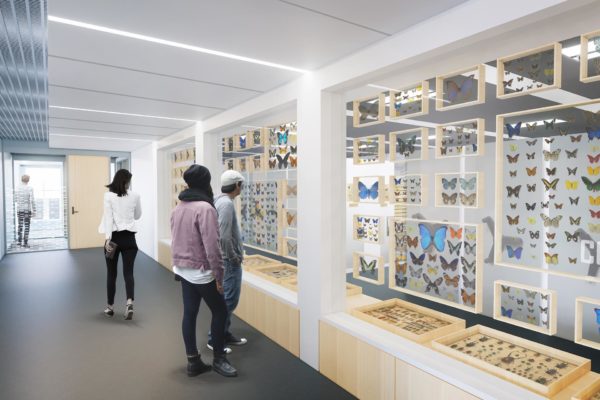
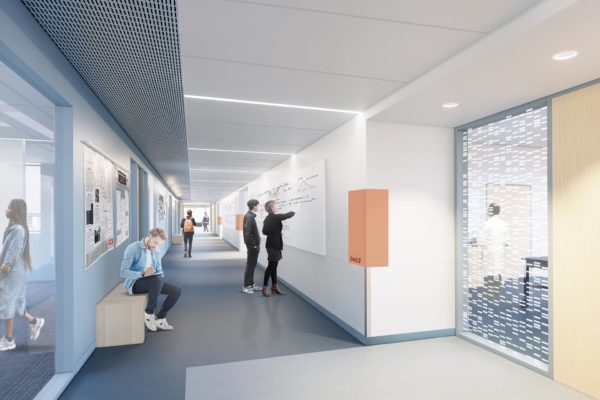
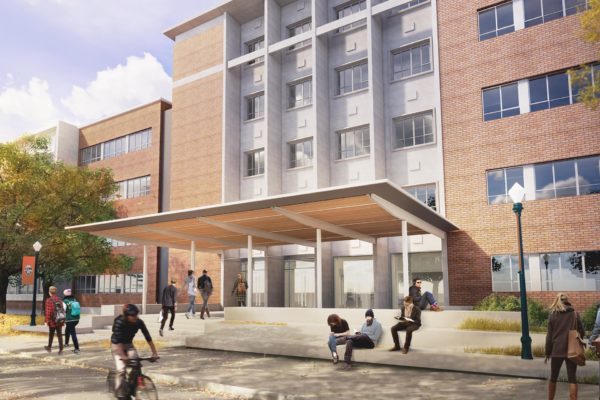
Simplified Solutions for Elevated Performance
A high level of energy efficiency for a lab building can be a challenge due to the substantial quantities of outside air required for laboratory safety. This project being a retrofit of an existing building introduced another layer of complexity.
The space includes multiple stringent laboratory spaces including a vivarium, BSL-2 containment lab, clean rooms, PCR labs, radioisotope hoods, wet collections, dirt labs, plant clinic, anatomy labs, and cell and tissue culture and high-value research collection spaces. We needed to fit the systems and equipment within the available space while maintaining performance and maintenance requirements.
We addressed the energy efficiency requirement by providing heat recovery coils in the lab and general exhaust systems. Heat is recovered from the warmer-than-outside-air exhaust air stream during heating periods and applied to the building’s heating loop. Similarly, during periods of cooling, heat is rejected to the cooler-than-outside-air exhaust air stream to add cooling to the building’s chilled water loop.
The labs required high volumes of outside air for ventilation but also needed additional cooling at peak demand. Rather than increasing the air quantity, chilled beams were added to the lab spaces for supplemental cooling, thus limiting the air supply to only what was required for laboratory ventilation.
Spatial constraints in the existing building complicated the organization of the many utilities required for a lab application. Being closely connected to the architectural and structural consultants, we were able to incorporate an extensive number of vertical shafts for utilities distribution (piping and ductwork), minimizing the size of branch ductwork and piping on each floor. This simplified design and coordination while enabling a high concentration of maintainable utilities in a small space.
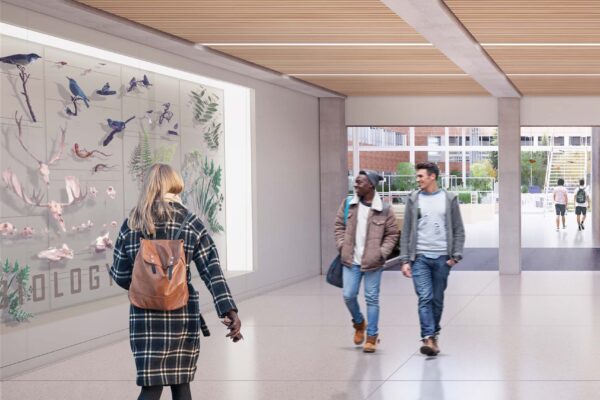
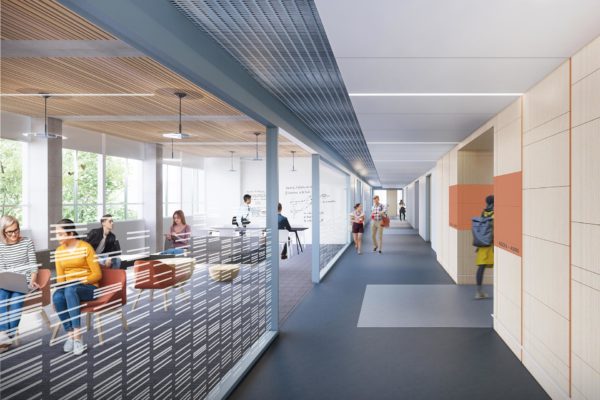
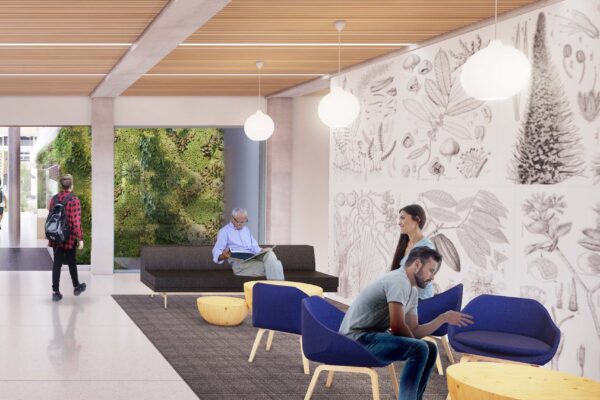
Deeper Analysis, Improved Efficiency
Since building envelope improvements were limited, most of the building’s energy savings came from the optimization of the mechanical systems, namely the hydronic heat recovery, reduced air circulation, ventilation fan efficiency, optimized dehumidification, and exhaust fan controls.
We performed a specialized analysis of specific applications with EDSL Tas energy modeling software for the architectural consultants to address concerns about the spandrel glass window cavity in some spaces reaching excessive temperatures that could damage the building envelope. Through analysis, we simulated the cavity temperature over a typical year, accounting for hourly solar irradiance and the assembly’s conductive and emissive performance. Our results showed that in a typical year no conditions where temperatures would exceed material stress thresholds would occur.
Working with the Energy Trust of Oregon, we determined the renovated building performs 36% better than the current energy code requirements for new buildings.

Consistent Teaming for Exceptional Results
In collaborating with trade partners and consultants on the Cordley Hall project, we realized a design that met the owner’s requirements for efficiency, usability, flexibility, and maintenance. The project required exceptional integration of all team members and significant communication to minimize the number of people on-site at one time. We became a key partner for on-site coordination and established a steady meeting cadence early on to consistently review the project for constructability while staying within OSU’s target budget. In the end, the project received substantial utility rebates for energy efficiency.

Want to be a part of projects like this? Join Our Team.
